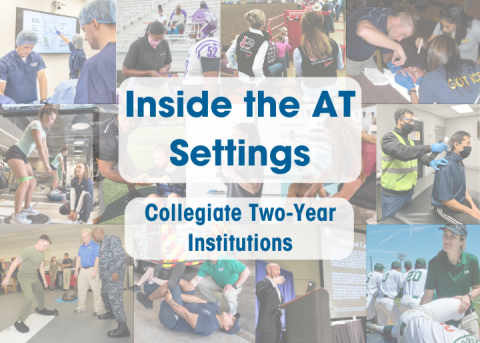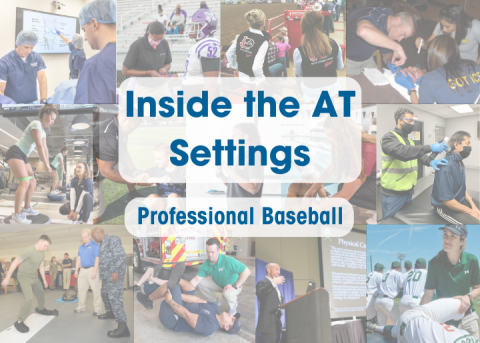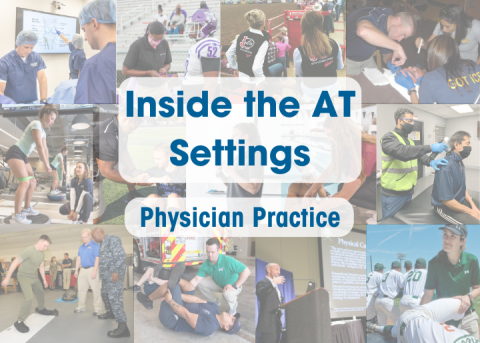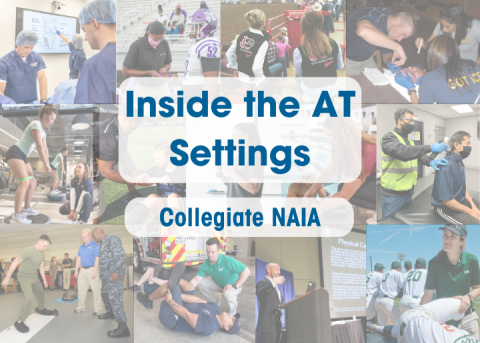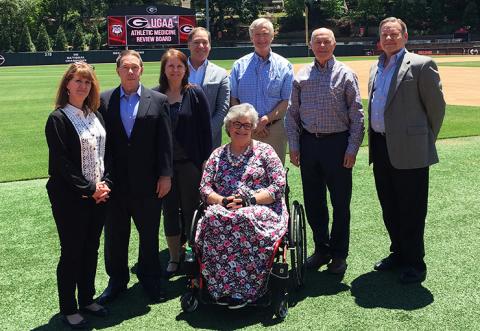
By Timothy Neal, MS, ATC, CCISM
In the past several years, conflicts of interest have arisen from providing quality athletic medical care to student athletes, and the sense of duty or fear of unemployment on the part of athletic trainers and team physicians caring for those student athletes. Because of the increasing public awareness of conflicts of interest on the part of the athletic medical staff, there is a heightened sense of scrutiny on the operation of intercollegiate athletic medicine departments nationally. An editorial in the Journal of Athletic Training in 2014 titled, “The Need for Accountability and Transparency in Intercollegiate Athletic Medicine,” expertly outlined how highly competitive intercollegiate athletic departments have been insulated from other institutional departments and experienced little accountability to anyone regarding athletic medical care to student athletes. The editorial also went on to advocate for institutions to develop an athletic medical review board (AMRB), which would function similar to institutional review boards (IRB) for research. AMRB would provide independent oversight of an intercollegiate athletic medicine operation, and provide institutional administration with a report of its findings annually. The JAT editorial introduced the notion of an AMRB in the fall of 2014; however, how many institutions have developed an AMRB, and are there any nationally that an institution could use as a model to develop its own AMRB to ensure transparency of quality care delivered to student athletes?
Ron Courson, ATC, PT, NRAEMT, senior associate athletic director for sports medicine at the University of Georgia Athletic Association (UGAA), has been a long-time leader of innovation in athletic medicine, from emergency action planning and MRSA prevention to care in athletics, AED protocols and other critical contributions to caring for athletes. Courson added another item to his list of contributions by establishing the nation’s first intercollegiate AMRB at the University of Georgia in 2015. As a member of the University of Georgia AMRB, the author can attest to the value the AMRB brings to the care of UGAA student athletes. The details of the AMRB and how it functions can benefit other institutions looking to enhance their athletic medicine operation.
Courson set up the UGAA AMRB with a diverse group of professionals at the first meeting in 2015. Courson invited to the AMRB experts not affiliated with UGA in the following areas: athletic training, team physicians, scholars and educators who are familiar with institutional review processes. Additionally, he invited UGA institutional leaders and non-athletic department professionals to participate, such as highly regarded UGA faculty scholars, the UGA general counsel and a former UGAA student athlete. The areas of expertise on the panel included policy and procedure development experience, injury care, policy and procedure reviews, departmental leadership, legal considerations, medical decisions and scholars in the area education, ethics and epidemiology
Starting at the 2016 meeting, Courson invited prominent members of the athletic medicine community to present to the board. In 2016, NCAA Chief Medical Officer Brian Hainline, MD, spoke to the AMRB, and in 2017, NATA Hall of Fame Member Gary Wilkerson, EdD, ATC, presented to the AMRB. Both Hainline and Wilkerson were co-authors of the Journal of Athletic Training editorial that led Courson into developing the UGAA AMRB.
Courson hosts an annual two-day meeting during which UGAA AMRB members can come to campus for a comprehensive review of the athletic medicine operation with various stakeholders. These meetings include:
- A review of athletic medicine department policies and procedures.
- Review of any new or modified athletic medicine department policy or procedure.
- Presentations by Courson and his staff on various key areas such as concussion management, mental health, nutrition, the athletic training program education plans, hospital affiliations and services, data analytics and other endeavors being initiated or contemplated by the UGAA sports medicine staff.
- A series of panel interviews and discussions with the AMRB with the team physicians, athletic training staff, strength and conditioning staff, nutritionist and mental health professionals.
- Meetings with the following stakeholders and discussions without the presence of Courson or his staff: Athletic Director Greg McGarity and his administrative staff, head coaches of several men’s and women’s teams, student athletes of several men’s and women’s teams and parents of student athletes. These open and frank discussions were helpful to the AMRB in understanding the big picture of services and communication necessary in delivering quality health care.
- Touring of facilities and reviewing plans for upgrading facilities to meet the growing needs of health care for all UGAA student athletes.
The AMRB members have many discussions with various stakeholders and each other throughout the two-day meeting. Within a few weeks, the members of the UGA AMRB compile their observations and recommendations to this author, who then would provide a draft of the annual AMRB report. After a couple of draft reviews by the AMRB, the report would be sent to UGA President Jere Morehead, McGarity, Deputy Director of Athletics Carla Williams and Courson for their review and action.
Several points of value consistently observed by UGAA AMRB members are:
- The importance of purpose. The UGAA athletic medicine department has a mission and vision statement known to all staff members based on core values (individual needs of student athletes, collaboration with others, proactive in addressing concerns, commitment to excellence and continuous improvement).
- The delivery of care is athlete-centered medicine, focusing on the individual patient’s needs and concerns.
- The review is totally transparent and comprehensive for the AMRB to consider and make recommendations on for future action by the sports medicine staff.
- Support of both the athletic and institutional leadership of the AMRB.
UGAA AMRB member, John Spiker, ATC, PT, notes that the AMRB, “provides appropriate recommendations for the most current care possible for UGAA student athletes, and that UGAA athletic medicine department collaborates closely with related academic programs, which allows for research rarely seen at the Division I athletic programs.” This relationship helps strengthen the relationship between the faculty and athletic department. Spiker said he also believes the diverse backgrounds of AMRB members encourages interaction and questions between disciplines that ensures a comprehensive review of the sports medicine operation.
“If athletic trainers are truly concerned about providing patient-centered and evidenced-based care, then an external advisory board serves as an excellent avenue to assist the health care team in looking at every aspect of their operation,” said Marisa Colston, PhD, ATC, another AMRB member and one of the JAT editorial co-authors. “This requires a willingness to be completely transparent and a desire to be held accountable. The review process is not punitive, but supportive and helpful.”
Courson provides insight for those considering starting their own AMRB: “It has been invaluable to have an outside, independent group of individuals to evaluate our program and provide feedback on how we may improve our service. One must be willing to open your program and be transparent in providing information. The AMRB requires ‘buy in’ by the entire sports medicine staff, as well as active participation by focus groups.”
Courson said they faced challenges when creating the UGAA AMRB, and their can help those thinking about creating their own AMRB.
“The initial creation and organization can be challenging,” he said. “Selecting the right individuals to compose the AMRB, and then finding the best time of the year to conduct the review is critical. Coordinating the different schedules of the AMRB members to bring them in for a meeting, and meshing it with the schedules of various focus groups can be challenging, but the information obtained from the review is well worth it.”
Some recommendations for those considering developing an athletic medical review board:
- Develop a mission and vision statement, along with core values of care. This is the guiding principle of the department. This establishes the benchmark for the AMRB to compare its findings.
- Reach out to institutional staff such as the general counsel/risk manager and faculty member(s) to ask them to serve on this board.
- Invite outside experts to serve on the board. This includes: athletic trainers experienced in developing policies and procedures and have an expertise in care, physicians, educators and others you feel will objectively review and make recommendations regarding the sports medicine operation on an annual basis.
- You can have regional or state experts attend the AMRB meeting. You may only need or obtain one outside expert from the list above to formulate the AMRB.
- Bring in the AMRB for one- or two-day meetings, paying for their transportation, hotel and meals. Send all information for the meeting ahead of time for the AMRB members to review prior to the meeting to save time.
- The institution may want to bring in an expert on various topics that are salient to growing concerns or trends such as mental health or data analytics.
- Establish a point person or chair of the AMRB to obtain all comments and suggestions of the AMRB for them to author a draft of the report. That final report is sent to the university president, athletic director and the director of sports medicine for their review and action. The AMRB also receives the final version of the report.
- Throughout the year, the AMRB is sent any change in policies for their review and suggestion.
An intercollegiate sports medicine department can greatly benefit from developing their own AMRB. The value of establishing this board will enhance the over-all care of student athletes, minimize liability and demonstrate to the institution that oversight of the sports medicine operation is a positive step in ensuring quality care and addressing risk for the sports medicine operation.
UGAA Athletic Medicine Review Board Members
Marisa Colston, PhD, ATC, HHP Interim Department Head, Faculty &Professor Graduate Athletic Training Program, University of Tennessee at Chattanooga
Jim Ellis, MD, FACEP, Physician, Medical Sports Group
Julie Gilchrist, MD, Medical Epidemiologist, National Center for Injury Prevention & Control, Centers for Disease Control and Prevention
Louise Hill, MEd, University of Georgia Fanning Institute Leadership Development Program
Timothy Neal, MS, AT, ATC, CCISM, Assistant Professor & Program Director of Athletic Training, Concordia University Ann Arbor; President, TLN Consulting
Michael Raeber, JD, General Counsel, University of Georgia
Mixon Robinson, MD, Orthopedic Consultant and former Team Physician, University of Georgia
John Spiker, ATC, PT, President/CEO, Health Works Rehabilitation and Fitness
Steven Stice, MD, Professor and Eminent Scholar, University of Georgia

